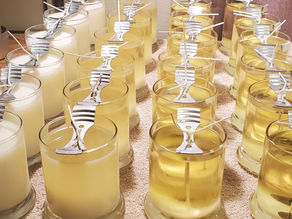top of page
$8.95 Flat Rate Shipping On All U.S. orders


Decorating With Candles for Cozy Charm
There’s something magical about a candle. It doesn’t just sit there on a shelf—it transforms the whole room. A tiny flame can turn a...

Robert Evans
Oct 262 min read


Fall Self-Care with Candlelight
There’s something magical about lighting a candle at the end of a long day that bring you calm.

Robert Evans
Oct 192 min read


Scented Candles That Bring You Calm
There’s a certain kind of magic in the soft flicker of a candle. One little flame has the power to shift the mood of a room—turning it from ordinary to inviting, from busy to calm.

Robert Evans
Oct 123 min read


Cozy Living Begins with Candles
There’s a certain kind of magic in the soft flicker of a candle. One little flame has the power to shift the mood of a room—turning it from ordinary to inviting, from busy to calm.

Robert Evans
Oct 52 min read


Scented Candles That Bring You Calm
Discover the best scented candles for stress relief. Lavender, vanilla, and chamomile scents to help you relax, unwind, and find your calm.

Robert Evans
Sep 283 min read


How to Care for Your Candles So They Last Longer
There’s something about the glow of a candle that feels like magic. Maybe it’s the way the flame dances gently, casting little shadows across the walls.

Robert Evans
Sep 143 min read


Best Candle Scents for a Cozy Fall Evening
There’s something about fall evenings that beg for a little extra comfort. Maybe it’s the early sunsets, or the way the air carries that...

Robert Evans
Sep 73 min read


Why Soy Candles Are Better for Your Home
There’s something sacred about lighting a candle at the end of a long day.

Robert Evans
Aug 313 min read


Wick Too Short? Here's How to Fix It Without Losing Your Cool (or Your Candle)
Accidentally trimmed your wick too short? Or maybe it took a dive and disappeared under the wax? Don’t worry — your candle’s not doomed.

Robert Evans
Aug 172 min read


Best Candles to Gift for Birthdays, Breakups, or Just Because
There’s something about gifting a candle that feels deeply personal without being over-the-top.

Robert Evans
Aug 32 min read


Light, Breathe, Relax: The Transformative Perks of Daily Candle Rituals
There’s something quietly transformative about lighting a candle.

Robert Evans
Jul 201 min read


Creating a Cozy Night In—Candles, Blankets & No Guilt
We’ve got the lowdown on why these options are the way to go.

Robert Evans
Jun 292 min read


Candlelit Dinner Ideas for a Romantic Evening
There’s something undeniably magical about a candlelit dinner.

Robert Evans
Jun 152 min read


"Go Natural with Your Candles!"
We’ve got the lowdown on why these options are the way to go.

Robert Evans
May 43 min read


Stay Level: The Candle Tip That’s Not Just About Balance (But Kind of Is)
Let’s talk about something that doesn’t get enough credit in the candle world: staying level.

Robert Evans
Apr 202 min read


"Bright Ideas: Go Natural with Your Candles!"
Gather ‘round, grab a cup of Turkish Coffee (or, you know, light a candle that smells like it), and let’s talk about something that’s...

Robert Evans
Apr 63 min read


Candle Safety: The Do's and Don'ts for a Safe and Cozy Home
Ah, candles—those enchanting little wicks of light that can transform the most mundane bathroom into a romantic oasis. Whether you love...

Robert Evans
Mar 143 min read


Why Gifting a Candle Can Brighten Someone's Day: My Unexpected Experience with Candle Etiquette
Candles bring warmth and joy to our lives, offering a comforting ambiance that can transform any space. Recently, I faced the task of...

Robert Evans
Jan 263 min read


Have you heard? Lighting candles in winter can actually boost your mood! Here's how it works
As winter's chill sets in and days become shorter, feelings of gloom can creep in. Cold temperatures and endless nights often leave us...

Robert Evans
Jan 123 min read


The Art of Handcrafted Candle Care: Preserving Your Luxurious Glow
Handcrafted candles are more than just sources of light; they are artisanal creations, crafted with care and designed to evoke feelings of w

Robert Evans
Dec 29, 20244 min read
The TPC Blog
bottom of page
